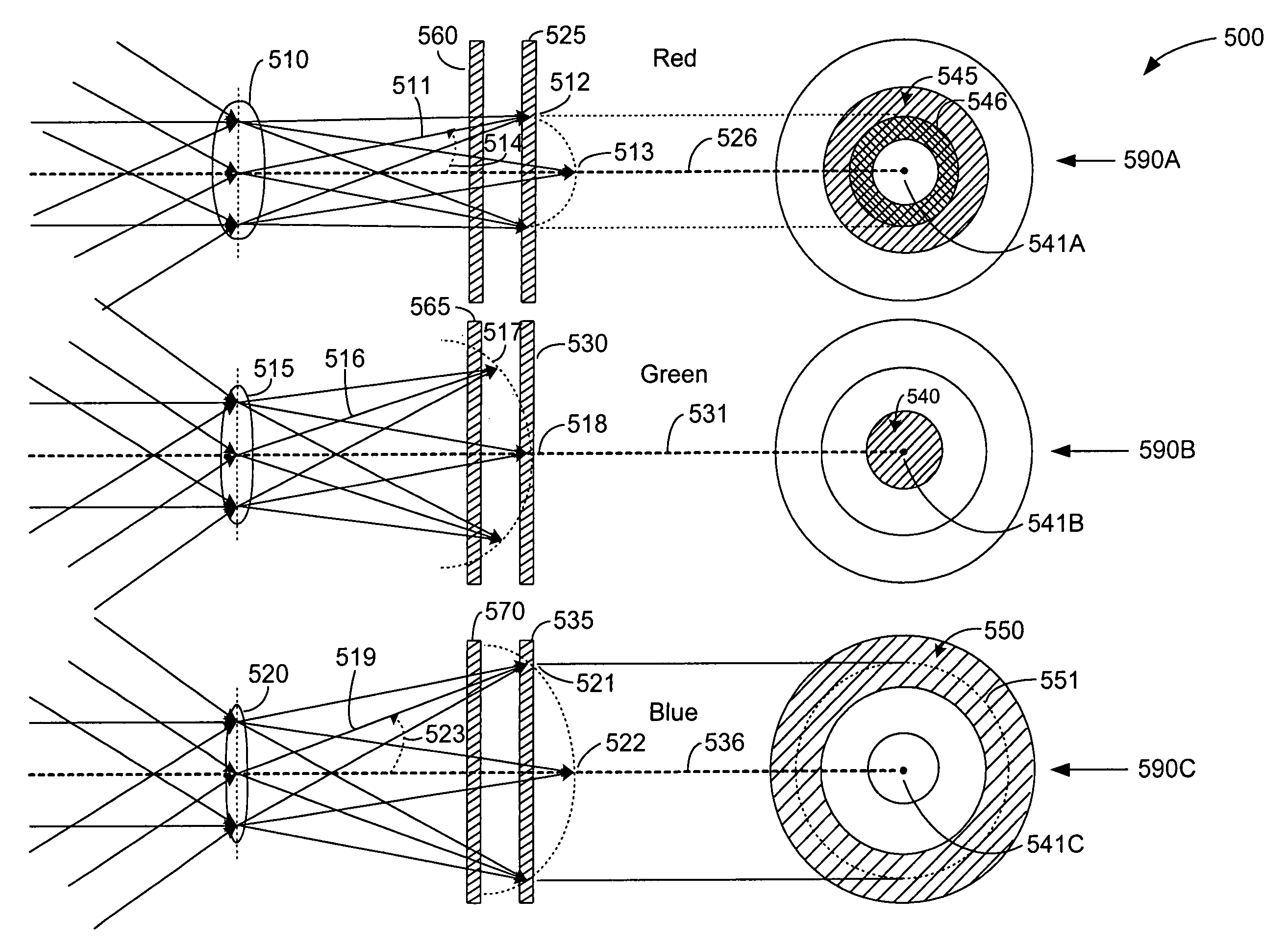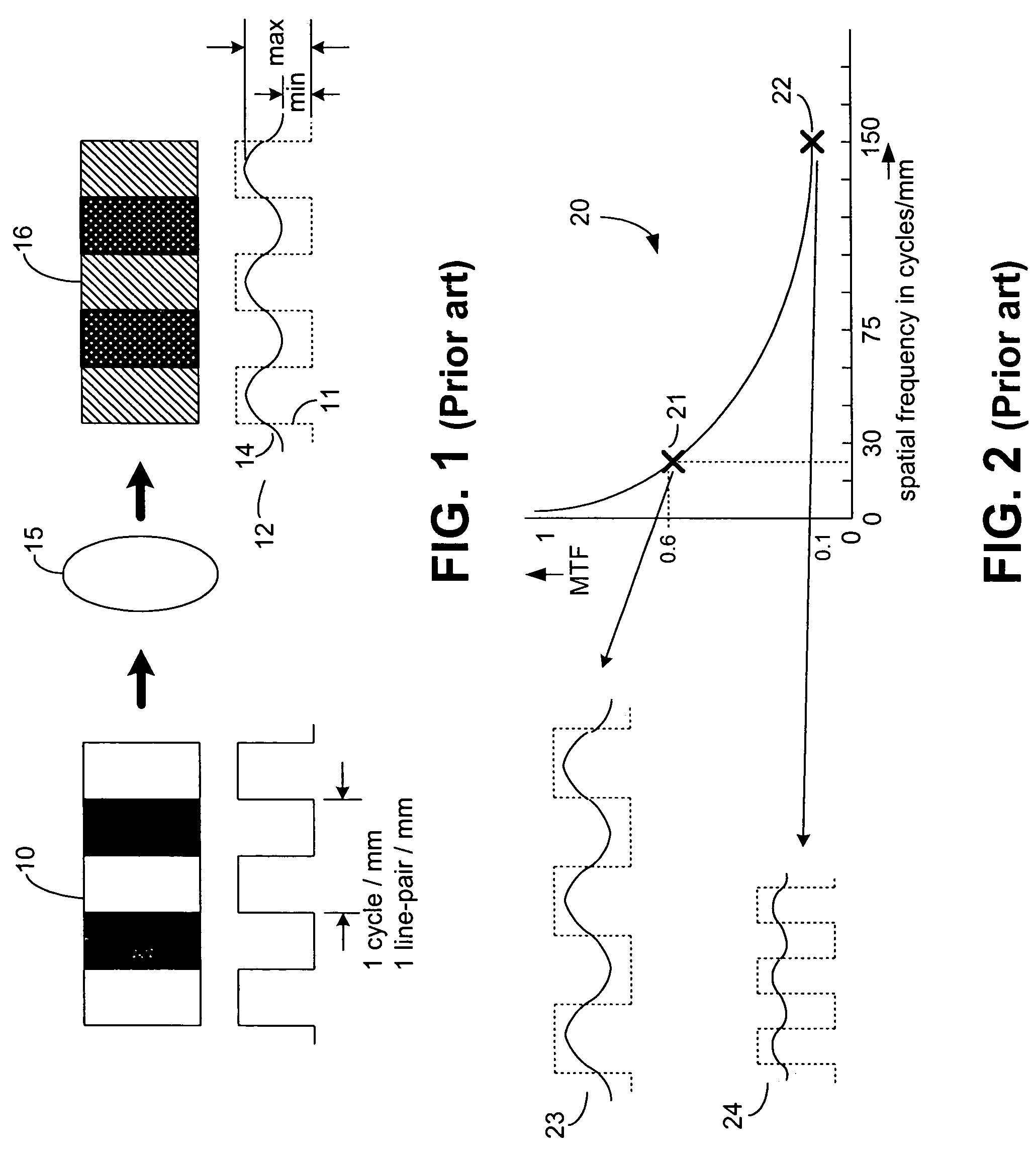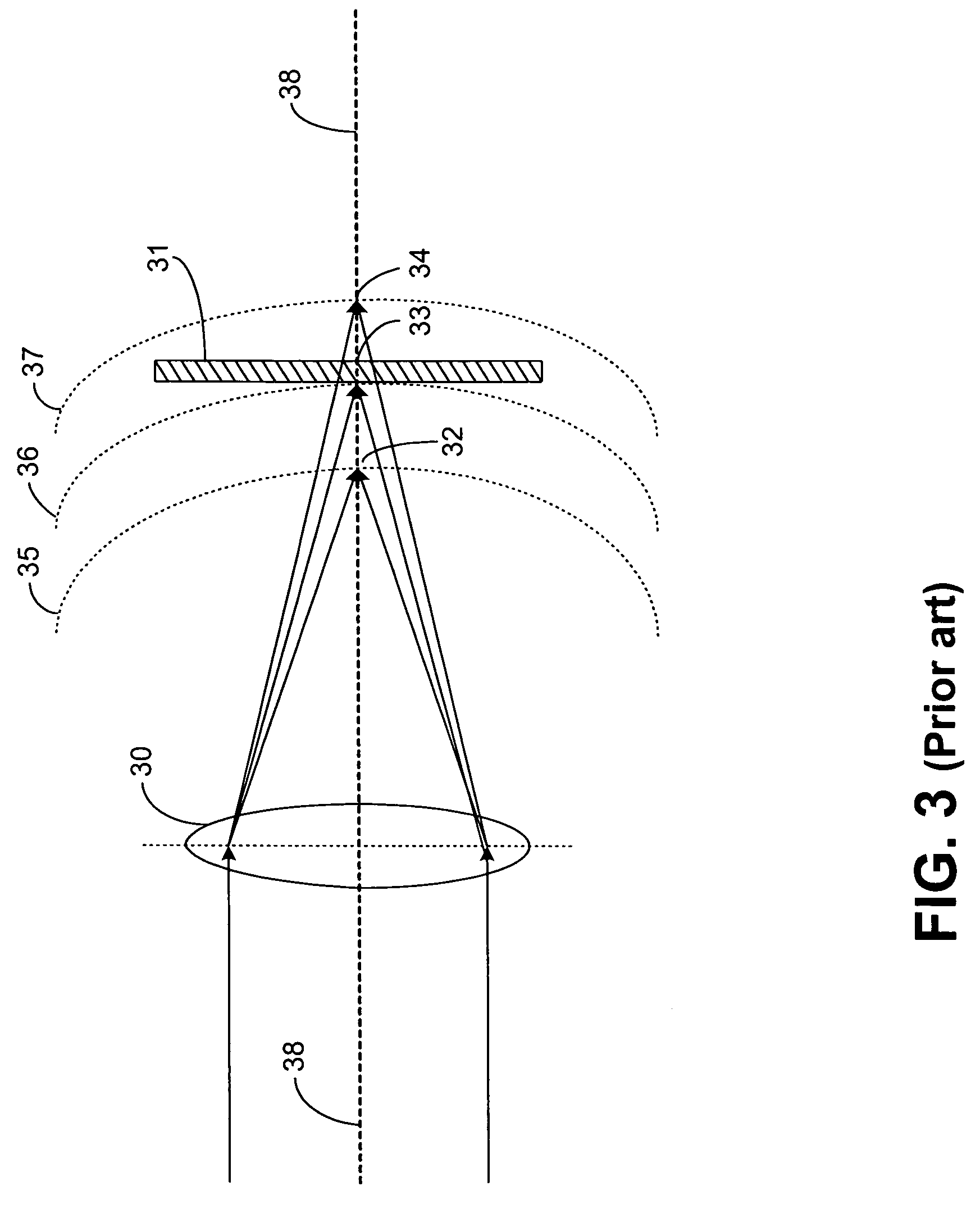Imaging systems and methods
a technology applied in the field of imaging systems and methods, can solve the problems of poor peripheral imaging performance, poor transmission of certain colors, and optical aberration, and achieve the effect of optimizing the transfer function (mtf)
- Summary
- Abstract
- Description
- Claims
- Application Information
AI Technical Summary
Problems solved by technology
Method used
Image
Examples
Embodiment Construction
[0019]The various embodiments in accordance with the invention describe systems and methods for imaging. The imaging systems generally incorporate multiple lenses that are individually configured to receive multi-wavelength light from an object to be imaged. Each lens provides an optimal modulation transfer function (MTF) for an individual wavelength contained in the multi-wavelength light when this individual wavelength of light strikes the lens at a particular incident angle. Associated with each lens is a color filter and a sensor. The color filter receives the multi-wavelength light from the lens, and transmits the individual wavelength of light on to the associated sensor. The image signals obtained from the multiple sensors are then combined to generate an image of the object.
[0020]In an exemplary embodiment, a three-lens system comprises a first lens configured to optimize the MTF of a first wavelength incident along the optical axis of the first lens, a second lens configure...
PUM
 Login to View More
Login to View More Abstract
Description
Claims
Application Information
 Login to View More
Login to View More - R&D
- Intellectual Property
- Life Sciences
- Materials
- Tech Scout
- Unparalleled Data Quality
- Higher Quality Content
- 60% Fewer Hallucinations
Browse by: Latest US Patents, China's latest patents, Technical Efficacy Thesaurus, Application Domain, Technology Topic, Popular Technical Reports.
© 2025 PatSnap. All rights reserved.Legal|Privacy policy|Modern Slavery Act Transparency Statement|Sitemap|About US| Contact US: help@patsnap.com



